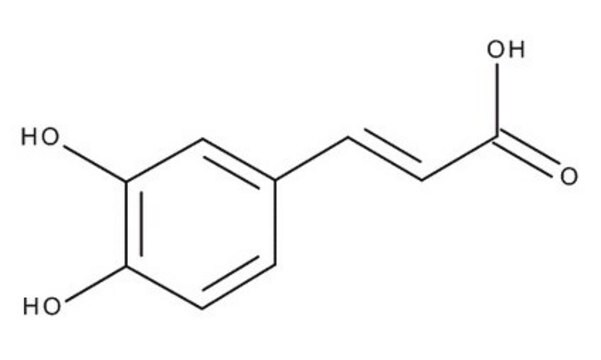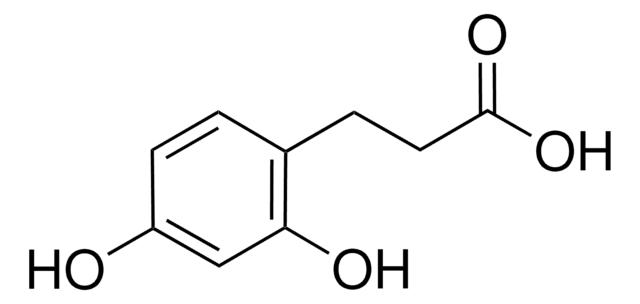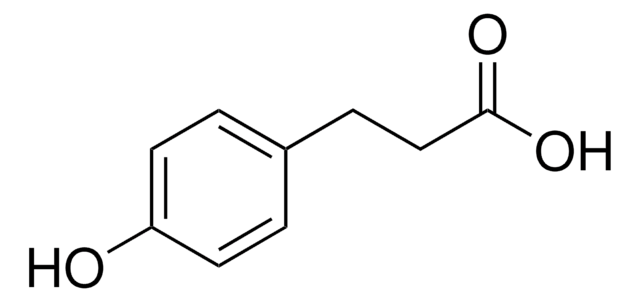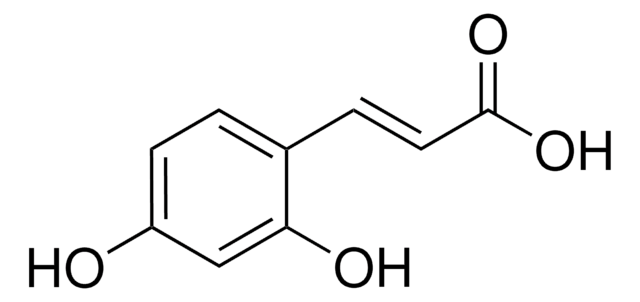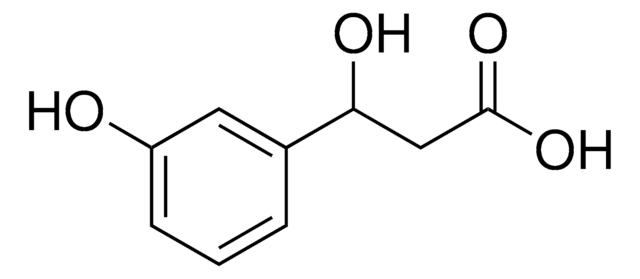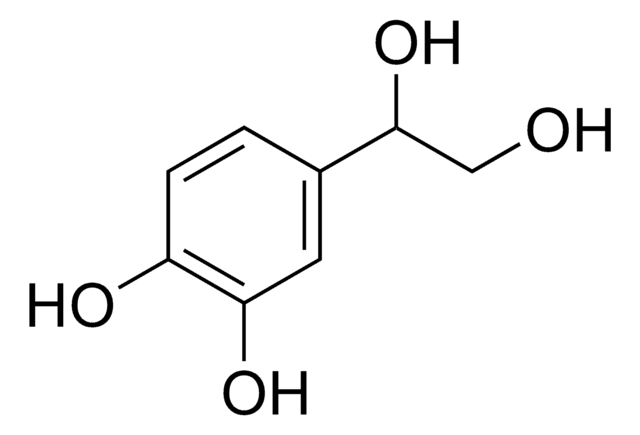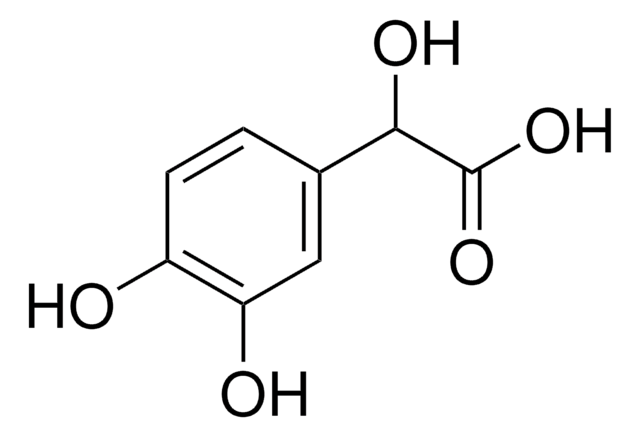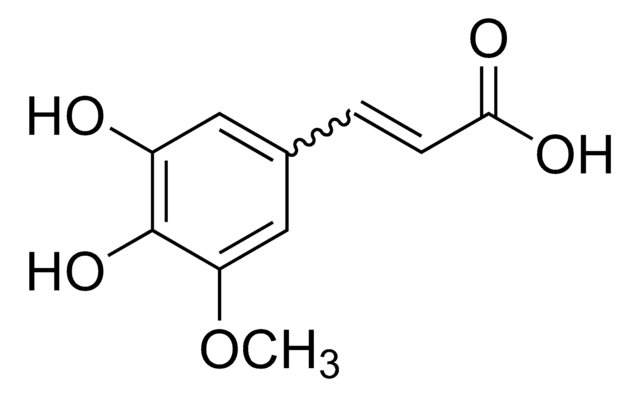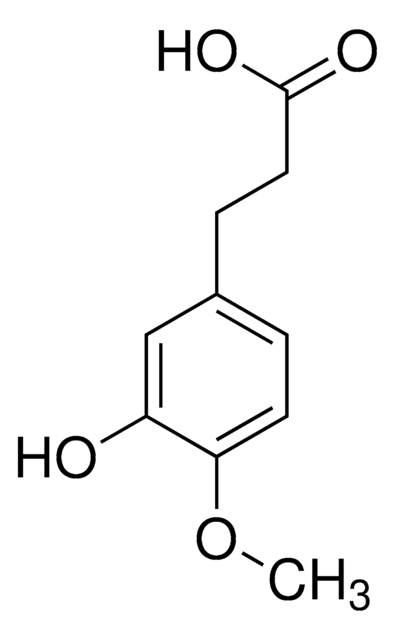102601
3,4-Dihydroxyhydrocinnamic acid
98%
Sinonimo/i:
3-(3,4-Dihydroxyphenyl)propionic acid, Hydrocaffeic acid
About This Item
Prodotti consigliati
Livello qualitativo
Saggio
98%
Punto di fusione
136-139 °C (lit.)
Stringa SMILE
OC(=O)CCc1ccc(O)c(O)c1
InChI
1S/C9H10O4/c10-7-3-1-6(5-8(7)11)2-4-9(12)13/h1,3,5,10-11H,2,4H2,(H,12,13)
DZAUWHJDUNRCTF-UHFFFAOYSA-N
Cerchi prodotti simili? Visita Guida al confronto tra prodotti
Categorie correlate
Descrizione generale
Applicazioni
It can also be used for thesurface functionalization of nanoparticles. The functionalization with DHCA notonly improves the water solubility of nanoparticles but also provides a platformfor further modification due to the presence of surface carboxyl groups.
Avvertenze
Warning
Indicazioni di pericolo
Consigli di prudenza
Classi di pericolo
Eye Irrit. 2 - Skin Irrit. 2 - STOT SE 3
Organi bersaglio
Respiratory system
Codice della classe di stoccaggio
11 - Combustible Solids
Classe di pericolosità dell'acqua (WGK)
WGK 3
Punto d’infiammabilità (°F)
Not applicable
Punto d’infiammabilità (°C)
Not applicable
Dispositivi di protezione individuale
dust mask type N95 (US), Eyeshields, Gloves
Scegli una delle versioni più recenti:
Possiedi già questo prodotto?
I documenti relativi ai prodotti acquistati recentemente sono disponibili nell’Archivio dei documenti.
I clienti hanno visto anche
Il team dei nostri ricercatori vanta grande esperienza in tutte le aree della ricerca quali Life Science, scienza dei materiali, sintesi chimica, cromatografia, discipline analitiche, ecc..
Contatta l'Assistenza Tecnica.